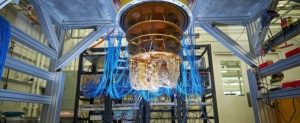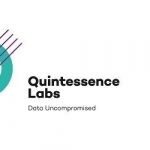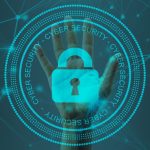Quantum News Briefs August 1: Post-Quantum designed protocol ratified by Internet Engineering Task Force as new standard for quantum-safe VPN communications; USA’s quantum talent shortage a national security vulnerability; Vilnius University’s agreement with Poznań Supercomputing & IBM Quantum Network provides infrastructure to use quantum computing technologies & develop new fields of science & study in Central & Eastern Europe + MORE

Quantum News Briefs August 1:
Post-Quantum designed protocol ratified by Internet Engineering Task Force as new standard for quantum-safe VPN communications
 The world’s efforts to secure digital communications from the threat posed by quantum computers took a significant leap forward as a new standard for quantum-safe Virtual Private Networks (VPN) has been ratified by the Internet Engineering Task Force (IETF). The protocol was proposed and designed by cyber security firm Post-Quantum and is a new standard securing communications from attack by quantum computers. Quantum News Briefs summarizes the announcement.
The world’s efforts to secure digital communications from the threat posed by quantum computers took a significant leap forward as a new standard for quantum-safe Virtual Private Networks (VPN) has been ratified by the Internet Engineering Task Force (IETF). The protocol was proposed and designed by cyber security firm Post-Quantum and is a new standard securing communications from attack by quantum computers. Quantum News Briefs summarizes the announcement.
Post-Quantum is a British cyber security company that’s built a portfolio of market-ready quantum-safe cyber security products. Post-Quantum’s own Hybrid PQ VPN uses the new IETF standard and is already in use by NATO to secure its communications from quantum attack, supporting interoperable communications between NATO members.
The new protocol has already been used by Banque de France and Deutsche Bundesbank to secure payments messages, paving the way for full adoption by the Bank for International Settlements to secure communications between the world’s central banks.
The new IETF standard specifies how VPNs can exchange communications securely in the quantum age. The novel approach prioritises interoperability by making it possible for multiple post-quantum and classical encryption algorithms to be incorporated into VPNs. Combining both old and new encryption is essential to ensure no disruption to the functioning of existing IT systems, and to protect data from attack by both classical and quantum computers.
This is a particularly important milestone for internet connectivity and security as we are transitioning from an era where the world relied upon just one or two algorithms (RSA and Elliptic Curve), to a situation where different nation states are deploying a wide variety of different post-quantum algorithms. This new IETF standard is the glue that allows parties using different public key encryption algorithms to talk with one another.
CJ Tjhai, CTO, Post-Quantum and original author of the new IETF standard said: “I’d like to thank all the technologists that collaborated with us on this IETF standard. Much of the focus has been on NIST’s new post quantum encryption algorithms themselves, but this is insufficient unless you have a protocol that defines how the connectivity is done. The easiest way to prevent Harvest Now Decrypt Later attacks is to deploy a PQ VPN based on the new IETF standard. NIST’s new algorithms are only useful if we have agreed standards for their use and mature products that can accommodate them.”
Andersen Cheng, Executive Chairman, Post-Quantum added: “CJ and his collaborators have completed important work that makes it possible for tech companies to build quantum-safe VPNs that communicate to one another. We are entering a period where different countries are now recommending different encryption algorithms, so engineering our communications infrastructure to be interoperable and backward compatible is absolutely crucial. That’s the value our own VPN is bringing to organisations like NATO, a diverse member organisation with a variety of post-quantum algorithms in use.
Click here to read the July 13 announcement in-entirety.
USA’s quantum talent shortage a national security vulnerability
 Quantum technologies’ promising but unknown potential has led the Biden administration to rank U.S. leadership in this area among its highest priorities, but the United States currently lacks access to the talent required to maintain competitiveness. The United States’ QIST talent shortage is a national security risk—and the White House has no solid plan to fill critical vacancies. Quantum News Briefs summarizes a recent article in Foreign Policy by Sam Howell, a researcher with the Technology and National Security Program at the Center for a New American Security.
Quantum technologies’ promising but unknown potential has led the Biden administration to rank U.S. leadership in this area among its highest priorities, but the United States currently lacks access to the talent required to maintain competitiveness. The United States’ QIST talent shortage is a national security risk—and the White House has no solid plan to fill critical vacancies. Quantum News Briefs summarizes a recent article in Foreign Policy by Sam Howell, a researcher with the Technology and National Security Program at the Center for a New American Security.
Quantum systems may power the next generation of defense technologies. The first country to scale and commercialize quantum technologies could gain the ability to improve their position, navigation, and timing capabilities; bolster intelligence, surveillance, and reconnaissance tactics; enhance counter-stealth capabilities; or crack adversaries’ encryption methods. They will be able to threaten previously unreachable parts of adversaries’ corporate, military, and government infrastructure at unprecedented speed.
QIST has become a central battleground of U.S.-China competition. Neither country maintains a decisive advantage across all three QIST subfields. The United States leads in the development of quantum computing and quantum sensing—but Beijing is catching up. China is ahead of the United States in the development of quantum communications technologies and holds the highest number of total quantum technology patents, indicating that it could soon erode the United States’ advantages.
Precise definitions of “quantum talent” and “quantum workforce” are still unfolding. The quantum industry is relatively nascent and engineers must overcome several remaining technical hurdles to build quantum systems capable of delivering real-world effects. As a result, the jobs, skills, and degrees that are relevant to a quantum workforce are ambiguous. But the need to develop a talent pool equipped to understand and apply QIST is urgent to compete with adversaries and remain at the cutting edge of research and discovery. Unfortunately, the United States faces significant roadblocks in achieving this.
It is increasingly clear that a competitive quantum workforce must hold general science, technology, engineering, and math (STEM) skills as well as quantum-specific expertise. The United States’ general STEM skills gap is well–documented. The United States is projected to face a shortfall of nearly 2 million STEM workers by 2025, due in part to insufficient processes to develop future STEM talent.
The fastest path to augmenting the U.S. quantum workforce likely involves international collaboration, concerted efforts to retain foreign-born workers, and initiatives to reskill workers in other adjacent technology industries. This is because increased investment in QIST has created a landscape in which readily available expertise is globally dispersed.
Developing new domestic QIST experts is a slow process. The median time to complete U.S. higher-education QIST degrees ranges from four to 10 years, and few QIST-specific programs exist. Existing foreign talent is thus required to fill QIST knowledge gaps in the immediate term and build additional domestic avenues to QIST expertise in the longer term. Click here to read the Foreign Policy article in-entirety.
Vilnius University’s agreement with Poznań Supercomputing & IBM Quantum Network provides infrastructure to use quantum computing technologies & develop new fields of science & study in Central & Eastern Europe
Vilnius University (VU) signed an agreement with the Poznań Supercomputing and Networking Centre (PSNC) in May 2023 and is the first institution in Central Europe to join the IBM Quantum Network. This cooperation provides the infrastructure for the academic community to use quantum technologies and develop new fields of science and study in the area of quantum computing at VU and nationally. Quantum News Briefs summarizes a recent article by Professors Povilas Treigys and Remigijus Paulavičius of the Faculty of Mathematics and Informatics of VU.
“Cooperation with PSNC has not happened by accident”, Prof. Paulavičius explains. “This centre is the leader in the field of quantum technologies in the Central and Eastern European region.
According to the scientist, by taking on experience from PSNC, VU will become capable of even more targeted investment in quantum technologies. PSNC, which is part of the Institute of Bioorganic Chemistry of the Polish Academy of Sciences, was the first institution in Central Europe to join the IBM Quantum Network in February 2022. The centre is also scheduled to have a physical quantum computer in 2025
“Thanks to the network, we currently have access to the quantum computing performed in the U.S. However, access alone is not enough. In order to be able to use it, we need to employ the HPC (High Performance Computing) infrastructure available at VU. In Lithuania, we are the leaders in high-performance computing; thus, it is only natural that PSNC wanted to cooperate specifically with VU”, explains Prof. Treigys.
As early as next semester, VU students will be able to choose a new subject titled ‘Introduction to Quantum Computing’. From the next academic year, there are plans to offer more study programmes dedicated to quantum technologies.
For the community to better assimilate the new technologies, not only are educational materials being translated, but research related to quantum computing is also being promoted through competitions in cooperation with Adam Mickiewicz University in Poznań. In May, the VU team participated in a quantum hackathon. Moreover, VU was approached to be the organising institution of the competition in Lithuania.
According to Professors Povilas Treigys and Remigijus Paulavičius the cooperation opens up new opportunities for everyone willing to be at the forefront of technology to conduct research and study quantum computing. Contact Dr. Gintarė Bidlauskienė; Science Communication Project Manager at Vilnius University (VU) for complete details.
Silicon Quantum Computing Raises $50.4M after setting out to raise $130 M
 Startup Daily recently reported on Silicon Quantum Computing’s $50.4 million investment after it had set out to raise $130 million. Quantum News Briefs summarizes the July 15 report.
Startup Daily recently reported on Silicon Quantum Computing’s $50.4 million investment after it had set out to raise $130 million. Quantum News Briefs summarizes the July 15 report.
The deal took 13 months from when it was first announced. The raise was backed by existing investors the Australian government, Telstra, the Commonwealth Bank and University of NSW.
The deal took 13 months from when it was first announced. The raise was backed by existing investors the Australian government, Telstra, the Commonwealth Bank and University of NSW.
SQC launched in May 2017, and operates out of laboratories at UNSW. The quantum startup was founded by physicist Michelle Simmons and 12 months ago announced it had developed the world’s first integrated circuit manufactured at the atomic scale. The circuit, which operates as an analogue quantum processor, gives SQC the ability construct quantum models for a range of new materials, including pharmaceuticals, materials for batteries, and catalysts. SQC is also developing a ‘full stack’ quantum computer. The startup has now merged three different atomic-scale assets simultaneously in a breakthrough that creates a distinctive solid-state quantum microscope to map qubit wave functions, enabling them to realise optimal device designs to create programmable quantum processors.
Six years ago it raised $83 million in a Seed round from UNSW, Telstra, CBA, and Australian and NSW governments. The federal government has around a one-third stake, having now invested around $40 million, including $25 million in 2017. Cick here to read original article in StartupDaily in-entirety.
Sandra K. Helsel, Ph.D. has been researching and reporting on frontier technologies since 1990. She has her Ph.D. from the University of Arizona





















